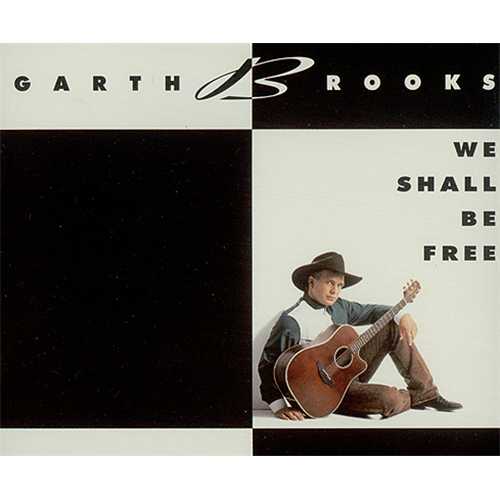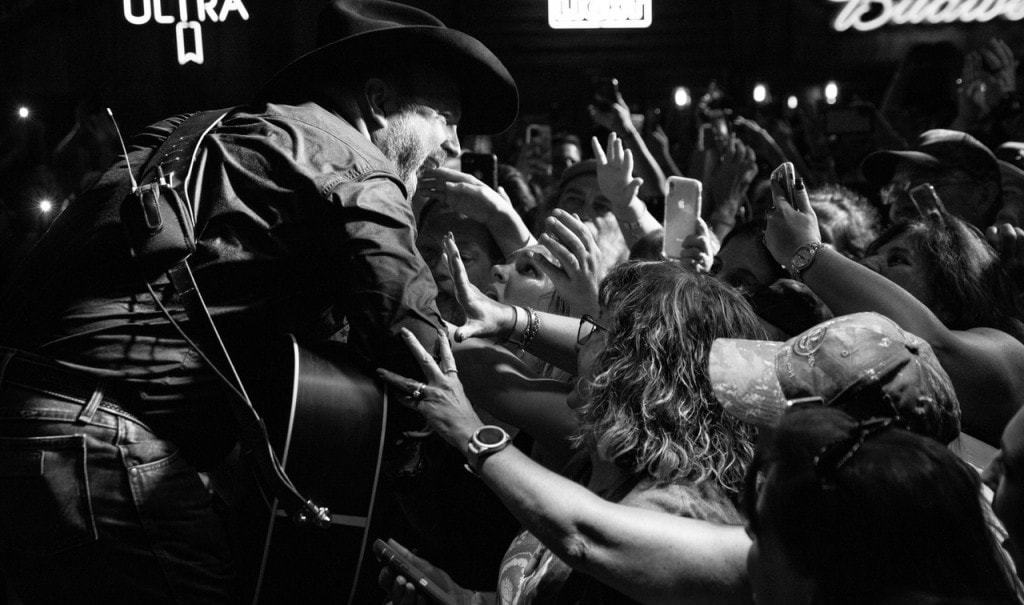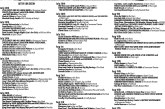A timeline of the country star’s career
When Garth Brooks performs at Neyland Stadium on Saturday, Nov. 16, it will mark the return of one of the biggest stars music has ever produced. He comes in at No. 2 in a list of best-selling artists in the United States (148 million, between The Beatles’ 183 million and Elvis Presley’s 146 million) and at No. 18 in a list of best-selling artists worldwide.
For some, when Garth Brooks arrived on the scene at the dawn of the 1990s, he was viewed as savior of country music. Randy Travis, Dwight Yoakam and a host of new traditionalists had helped return the genre to roots credibility after the “Urban Cowboy” era. It was Brooks, though, who turned country concerts into arena rock. He swung from ropes in front of huge video screens and borrowed as much from KISS as he did Merle Haggard, creating a massive teenage and young adult following that older artists had never been able to reach. His albums didn’t just go platinum, they went multi-platinum and diamond (10 million copies sold), and Brooks became the best-selling artist in the country.
Others, though, credited Brooks with killing traditional country music. Irascible singer-songwriter Kinky Friedman referred to him as “The Anti-Hank.” And, while Brooks’ songs were generally solid and often kept in the classic country mold, Nashville seemed to be paying attention to only the flashier elements. Suddenly, record labels seemed to all be looking for the next Garth, not the next great country performer.
Who is this guy?
Born in 1962, the son of an oil company employee father and a one-time country singer mother, Troyal Garth Brooks grew up in Yukon, Oklahoma, and went to Oklahoma State University on a track scholarship, earning a degree in advertising. He began performing at clubs in Stillwater, Oklahoma, and making forays into Nashville, where he and his wife, Sandy, relocated in 1987.
Capitol Records
After two years of working non-music jobs, singing on demos, meeting songwriters and making connections, Garth signed with Capitol Records and released his self-titled debut album. During this time, he performs at Knoxville’s Old City listening room Ella Guru’s (The Melting Pot is now in that location). Few fans showed up for the newcomer, but the night was so special to Brooks that he mentioned it in his 1995 song “The Old Stuff.” Brooks’ debut album would result in the Country Top 10 hits “Much Too Young (To Feel This Damn Old),” “The Dance,” “If Tomorrow Never Comes” and “Not Counting You.” In 1990, he is inducted into the Grand Ole Opry.
Garth makes friends in low and high places
While Brooks had made a sizable dent in the country charts with his 1989 debut album, it was a year later when he blew the doors off. The song “Friends in Low Places” actually had been the last song that Brooks had recorded as a demo singer, but the writers (Dewayne Blackwell and Earl Bud Lee) agreed to put a hold on the song for Brooks because of his impending record deal. It didn’t make it on the first album but was recorded for Brooks’ sophomore effort “No Fences.” “Low Places” became one of the biggest hits of the year and is what is called in the music industry a “career record,” making Brooks a star. It also became the template for pretty much every good-time country music party song for the next decade. If the rest had only been as good as “Low Places,” there would be a lot less pain and suffering in the world.
“The Thunder Rolls”
Brooks followed up the raucous “Friends in Low Places” with the sweet and thoughtful “Unanswered Prayers” and the uncontroversial “Two of a Kind, Workin’ On a Full House,” both of which went to No. 1. The third single off the album, though, was the tale of a woman who is done with her cheating husband’s infidelity. The single didn’t contain a fourth verse in which the woman gets a gun intending to kill the cheating polecat, but Brooks sang the final verse at live performances. A video for the song implied the woman was a victim of domestic abuse. While the video was initially aired on CMT and TNN, both stations pulled the video after complaints, which only increased its notoriety. Radio stations and organizations that supported victims of domestic abuse held special screenings of it. Tanya Tucker, who had recorded the song first, should have been so lucky!
“Ropin’ the Wind”
After just two years on the scene, it seemed all anyone could talk about in country music was Garth Brooks. He won the Country Music Association Entertainer of the Year Award in 1991 and ’92, and more would follow. “No Fences” sold in the multimillions; at the date of this writing, it has sold more than 17 million copies in the United States alone. His third album, “Ropin’ the Wind,” shipped 4 million units on its release and went on to sell 10 million more (again, just in the U.S. alone). It was the first country album to debut at No. 1 on the Billboard Album Chart and, with five Country Top 10 hits, including a cover of Billy Joel’s “Shameless,” it cemented Brooks as the most popular performer in country music – if not the most popular performer in the country, period.
Taking a stand
Brooks’ fourth album (not including a Christmas release) kicked off with a song called “We Shall Be Free.” Among the inspirational lyrics about tolerance were the lines, “When we’re free to love, anyone we choose/When this world’s big enough, for all different views … Then we shall be free.” It was an obvious reference to gay rights, and probably that bit of tolerance would not have been tolerated by country radio from an artist with less clout. Brooks was unapologetic, though, and won praise from LGBT groups and respect from others who had not been so keen on his music before. The single was his first in a while to not reach the Top 10 (it made it to No. 12), but its impact was significant.

Wanna buy a used CD?
Upset over writers and performers not getting a cut from the sale of used CDs, Brooks demanded that his 1993 album “In Pieces” not be shipped to stores that sold used CDs as well as new ones. Record stores sued and won, but bitter feeling remained and would only get worse a few years later when Brooks made exclusive deals with Walmart.
Ropin’ the world
In 1993, Brooks set out on his first world tour, selling out stadiums – if not winning over critics in the process. One popular British DJ called him “Darth Brooks,” due to his domination of the country charts.
Pickin’ up the pieces
Brooks began regularly making nods to his influences in the songs he chose to cover. On “In Pieces,” he reunited New Grass Revival to back him up on the song “Callin’ Baton Rouge,” a song that band had debuted in 1989. He also recorded a version of “Hard Luck Woman” for the KISS tribute album “KISS My Ass: Classic KISS Regrooved” and covered Aerosmith’s “The Fever” on his 1995 album “Fresh Horses.”
Bucking the trend
By the release of “Fresh Horses,” it was becoming obvious that Brooks had already reached his peak for album sales. The album topped out at 4 million (a whopping success for any artist who didn’t regularly sell more than 10 million), and singles were no longer automatically topping the charts. A new tour, however, proved Brooks was still the king of stadiums. During a time when artists were jacking up ticket prices to $100 or more following the lead of The Eagles’ “Hell Freezes Over” tour, Brooks set out on a stadium tour that kept his tickets at $20 pre-”Hell Freezes” prices. The tour, which continued through 1998 and included Trisha Yearwood in the show, stopped at Knoxville’s Thompson-Boling Arena on Nov. 1 and 2, 1996.
The short life of “Chris Gaines,” 1999
In one of the strangest career moments for a major artist, Brooks creates the alter-ego Chris Gaines, an “edgy” Australian rocker with a troubled history. A movie is planned, but when the album proves no edgier than Kenny Loggins on Quaaludes, the movie, along with all planned Chris Gaines projects, is scrapped. Although the album shipped platinum (1 million copies were sent to record retailers), “The Life of Chris Gaines” was soon packing the clearance bins.
Hanging it up
In 2000, Brooks announced his retirement from touring and recording. He released one more album, “Scarecrow,” before going on a five-year hiatus. He divorced Sandy in 2001 and married fellow performer and former tour mate Trisha Yearwood four years later. Also, in 2005, he began playing special shows for charitable organizations and at a tribute show to longtime friend and performer Chris LeDoux. In 2007, he performed a series of nine sold-out shows in Kansas City, following that run with a 2009 residency in Las Vegas. Meanwhile, Brooks began releasing boxed sets of his older music exclusively through Walmart. He later cut exclusive deals with Target, as well.
Not so retired
In 2013, Brooks released a boxed set of new recordings called “Blame It All on My Roots: Five Decades of Influences.” The four-CD set was made up of songs that Brooks considered influential to his style. He followed by announcing a new world tour. In 2014, Brooks released the album “Man Against Machine,” which sold 1 million copies and downloads. Two years later, he issued “Gunslinger,” which also sold more than 1 million – a pretty good achievement in the digital age, but not Rihanna or Taylor Swift numbers.
Where’s the “Fun”?
In August 2018, Brooks announced that he would embark on a tour of major stadiums. In November of that year, he also teased fans with two songs from his new album, “Fun,” asking them to pre-order the album at $10 and promising a full album to follow. Two more songs were added in February 2019. Fans on Amazon, where the songs were released, seem a little testy. Comments include things like this: “If I had known this is a long time project I wouldn’t have ordered this.”
When will “Fun” arrive? Only Garth knows what Garth will do next.
Tickets for the Neyland concert are available at https://www.ticketmaster.com/artist/732705








